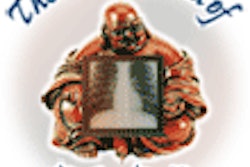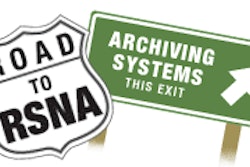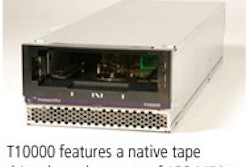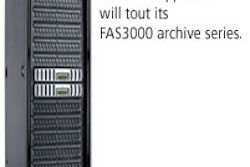Although radiologists around the world utilize lossy compressed images, there's no consensus or uniform set of what constitutes acceptable standards. But the Canadian Association of Radiologists (CAR) aims to change that.
At its 2005 annual meeting at Lake Louise, Alberta, in October, the CAR's PACS committee accepted in principle the use of irreversible compression algorithms for primary reading of diagnostic images as long as there would be no visible loss of information. Because modality source and anatomy both influence compression tolerance, however, it's not appropriate to assign single compression algorithms or compression ratios.
In an effort to help develop acceptable standards, CAR is sponsoring an initiative designed to solicit and formally measure levels of acceptability by a wide variety of radiologists who work in urban and rural academic and community hospitals located in every Canadian province.
In the first step of what may be a multiphase acceptability study, images are being acquired for 27 categories representing a combination of different body parts imaged by various modalities. These include the most common types of procedures as well as those that consume the most data storage in terms of size or number of images. A selection of both normal and abnormal images will comprise the database.
Every exam will be formatted into a set of four JPEG and four JPEG 2000 images. Each set represents a lossless compressed image, a lossy compressed image using a ratio proved acceptable by other research projects, and two lossy compressed images with higher ratios.
Beginning in June, radiologist reviewers will receive a DVD containing a DICOM viewer and 80 diagnostic exams containing one or more images. The exams will represent a selection of the eight different compression configurations. No image, however, will be repeated on a disk in a different compression format.
"This initial study is very ambitious, as it is large in scope and the first of its type," said study designer Dr. David Koff of the Sunnybrook and Women's College Health Sciences Centre in Toronto. "We want to demonstrate that at reasonable levels, lossy compression can be used with no visible loss. We want to obtain a consensus of radiologists from the generalist to the specialist representing the spectrum of a radiologist's career."
After the data is analyzed, the resultant consensus will be based on the most conservative majority opinion.
"We anticipate that another evaluation phase may be needed to refine acceptable ratios and to define new ones for less common procedures," Koff said.
Any interested radiologist working in Canada is invited to participate in study sessions, which are planned for a 90-day period beginning in June, he said.
"The more diverse the readers are, the feedback and opinions that we receive will better reflect the representative consensus we desire to achieve," Koff said. "We want all radiologists, regardless of their experience level, to be confident that the compression ratios for the digital images are more than adequate for interpretation."
Canada Health Infoway (CHI), a nonprofit corporation responsible for accelerating the development of interoperable electronic health information systems across Canada, is funding the project.
"It is CHI's objective to enable a physician to have the ability to request a patient's exams and start receiving them within five seconds," said Peter Bak, CHI's project director of diagnostic imaging architecture.
Bak noted that more than 80% of Canadian healthcare facilities are small hospitals and clinics, many of which are located in remote rural areas.
"The fact that most of the 540 hospitals with fewer than 100 beds have limited network connectivity mandates the use of compressed data as much as possible," he said.
With Canada's radiology specialists located in large metropolitan areas, transmitting digital exams over limited bandwidth for interpretation needs to be fast and efficient; the use of lossy compression facilitates this, Bak said.
Compressed exams also reduce storage requirements. In Canada, 35,000,000 radiology exams are performed each year -- a number that will rise as the baby boomer generation ages. Archiving lossy compressed images will have a direct impact on data storage expenses, he said.
Both Koff and Bak said they hoped that the results of the project will be useful to the global community of radiologists, and that the image collection may be made available for analysis outside Canada after the project is completed at the end of 2006.
Radiologists working in Canada who wish to volunteer as a reader should contact Dr. Koff at [email protected].
By Cynthia Keen
AuntMinnie.com contributing writer
February 16, 2006
Related Reading
Image compression method may make large mammo datasets more manageable, December 22, 2005
Lossy compression wins over Canadian radiologists, July 21, 2005
3D JPEG 2000 compression shines in multislice CT data, February 9, 2005
Copyright © 2006 AuntMinnie.com



















